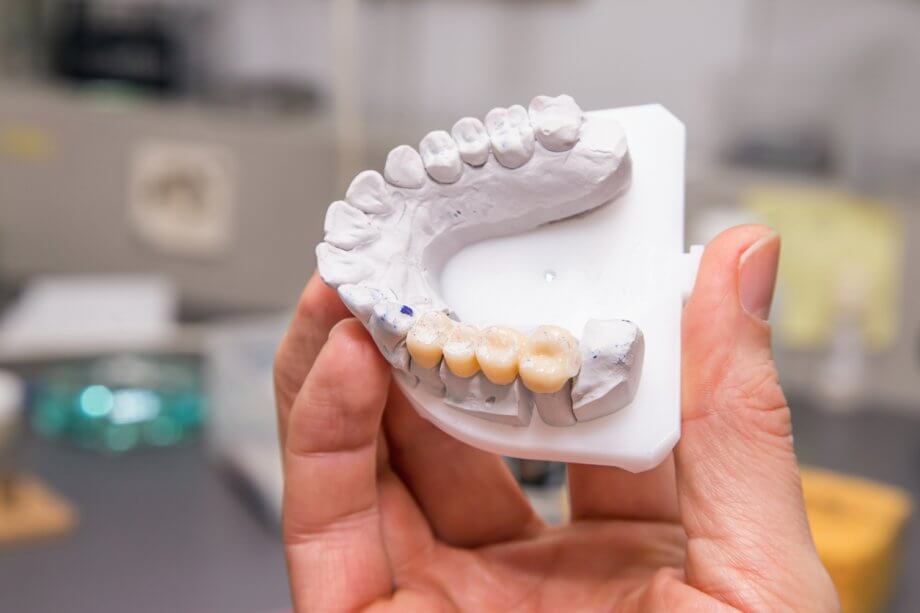There are three potential solutions for replacing missing teeth: dentures, fixed partial dentures, and dental implants. Each has its own advantages and disadvantages, but today we’re going to focus on the pros and cons of fixed partial dentures. If you’re weighing your options for replacing one or more teeth, here’s what you need to know about fixed partial dentures.
What Are Fixed Partial Dentures?
Fixed partial dentures, also known as dental bridges, fall under the umbrella of restorative dentistry. They bridge the gap in your smile by holding one or more replacement teeth (pontics) in place using one or two supports (abutments). There are a few different types of fixed partial dentures, including:
- Traditional fixed partial dentures, which are the most common type. They consist of two abutments on adjacent teeth to hold one or more pontics. The abutments in a traditional dental bridge are dental crowns.
- Maryland bridges use a metal or porcelain framework to hold the pontics in place rather than dental crowns. Maryland bridges are more affordable, but also prone to breakage when compared with a traditional bridge.
- Cantilever bridges are used when only one tooth is available to use as an abutment. This type of bridge is only used when there is no other option, as they can place a great deal of stress on the abutment tooth.
- Implant-supported bridges are an increasingly popular option for patients who want a long-lasting, durable solution for missing teeth. They can be used whenever three or more teeth are missing, with the outermost teeth receiving dental implants that act as abutments for pontics.
The Pros of Fixed Partial Dentures
Here are some of the reasons why patients might choose fixed partial dentures over other options for replacing their missing teeth:
- Fixed partial dentures cost less than dental implants.
- Dental insurance plans often cover the cost of fixed partial dentures, but may not cover implants.
- Getting a fixed partial denture is less invasive than dental implants and requires fewer office visits.
- Fixed partial dentures don’t depend on jawbone support and can be used when bone mass has been lost without requiring grafting.
- Getting dental implants is a surgical procedure with risks of infection, nerve damage, and injury to surrounding tissues. Fixed partial dentures don’t have these risks and are suitable for patients with underlying conditions that make them ineligible for surgery.
The Cons of Fixed Partial Dentures
These are some of the downsides of choosing fixed partial dentures:
- A fixed partial denture is only as good as the teeth that support it, while the integrity of a dental implant does not depend on adjacent teeth.
- With a fixed partial denture, bone loss will continue, which can eventually lead to a weakened bite and facial collapse. In contrast, dental implants replace the root of the tooth, preventing and even reversing bone loss.
- Fixed partial dentures are not as stable as implants and require more regular maintenance.
- Traditional fixed partial dentures compromise the structures of healthy teeth when they are altered in order to place crowns for the abutments.
Learn More About Fixed Partial Dentures
It’s important to discuss your options with a dentist before making a decision. Contact us today at 413-224-1493 to schedule an appointment.

